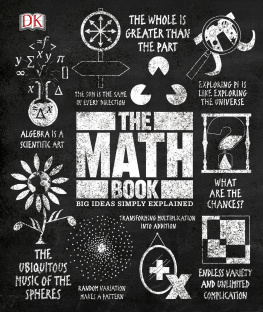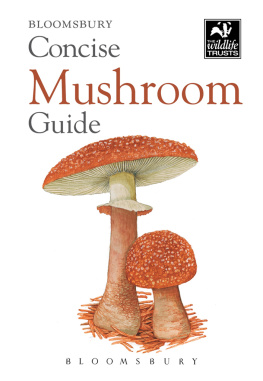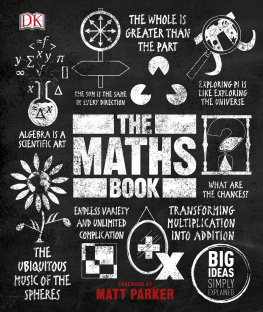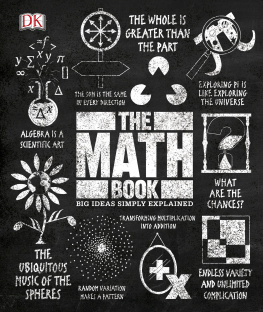FOREWORD
Summarizing all of mathematics in one book is a daunting and indeed impossible task. Humankind has been exploring and discovering mathematics for millennia. Practically, we have relied on math to advance our species, with early arithmetic and geometry providing the foundations for the first cities and civilizations. And philosophically, we have used mathematics as an exercise in pure thought to explore patterns and logic.
As a subject, mathematics is surprisingly hard to pin down with one catch-all definition. Mathematics is not simply, as many people think, stuff to do with numbers. That would exclude a huge range of mathematical topics, including much of the geometry and topology covered in this book. Of course, numbers are still very useful tools to understand even the most esoteric areas of mathematics, but the point is that they are not the most interesting aspect of it. Focusing just on numbers misses the forest for the threes.
For the record, my own definition of math as the sort of things that mathematicians enjoy doing, while delightfully circular, is largely unhelpful. Big Ideas Simply Explained is actually not a bad definition. Mathematics could be seen as the attempt to find the simplest explanations for the biggest ideas. It is the endeavor of finding and summarizing patterns. Some of those patterns involve the practical triangles required to build pyramids and divide land; other patterns attempt to classify all of the 26 sporadic groups of abstract algebra. These are very different problems in terms of both usefulness and complexity, but both types of pattern have become the obsession of mathematicians throughout the ages.
There is no definitive way to organize all of mathematics, but looking at it chronologically is not a bad way to go. This book uses the historical journey of humans discovering math as a way to classify it and wrangle it into a linear progression, which is a valiant but difficult effort. Our current mathematical body of knowledge has been built up by a haphazard and diverse group of people across time and cultures.
So something like the short section on magic squares covers thousands of years and the span of the globe. Magic squaresarrangements of numbers where the sum in each row, column, and diagonal is always the sameare one of the oldest areas of recreational mathematics. Starting in the 9th century BCE in China, the story then bounces around via Indian texts from 100 CE, Arab scholars in the Middle Ages, Europe during the Renaissance, and finally modern Sudoku-style puzzles. Across a mere two pages this book has to cover 3,000 years of history ending with geomagic squares in 2001. And even in this small niche of mathematics, there are many magic square developments that there was simply not enough room to include. The whole book should be viewed as a curated tour of mathematical highlights.
Studying even just a sample of mathematics is a great reminder of how much humans have achieved. But it also highlights where mathematics could do better; things like the glaring omission of women from the history of mathematics cannot be ignored. A lot of talent has been squandered over the centuries, and a lot of credit has not been appropriately given. But I hope that we are now improving the diversity of mathematicians and encouraging all humans to discover and learn about mathematics.
Because going forward, the body of mathematics will continue to grow. Had this book been written a century earlier it would have been much the same up until about page 280. And then it would have ended. No ring theory from Emmy Noether, no computing from Alan Turing, and no six degrees of separation from Kevin Bacon. And no doubt that will be true again 100 years from now. The edition printed a century from now will carry on past page 325, covering patterns totally alien to us. And because anyone can do math, there is no telling who will discover this new math, and where or when. To make the biggest advancement in mathematics during the 21st century, we need to include all people. I hope this book helps inspire everyone to get involved.

Matt Parker

INTRODUCTION
The history of mathematics reaches back to prehistory, when early humans found ways to count and quantify things. In doing so, they began to identify certain patterns and rules in the concepts of numbers, sizes, and shapes. They discovered the basic principles of addition and subtractionfor example, that two things (whether pebbles, berries, or mammoths) when added to another two invariably resulted in four things. While such ideas may seem obvious to us today, they were profound insights for their time. They also demonstrate that the history of mathematics is above all a story of discovery rather than invention. Although it was human curiosity and intuition that recognized the underlying principles of mathematics, and human ingenuity that later provided various means of recording and notating them, those principles themselves are not a human invention. The fact that 2 + 2 = 4 is true, independent of human existence; the rules of mathematics, like the laws of physics, are universal, eternal, and unchanging. When mathematicians first showed that the angles of any triangle in a flat plane when added together come to 180, a straight line, this was not their invention: they had simply discovered a fact that had always been (and will always be) true.

Early applications
The process of mathematical discovery began in prehistoric times, with the development of ways of counting things people needed to quantify. At its simplest, this was done by cutting tally marks in a bone or stick, a rudimentary but reliable means of recording numbers of things. In time, words and symbols were assigned to the numbers and the first systems of numerals began to evolve, a means of expressing operations such as acquisition of additional items, or depletion of a stock, the basic operations of arithmetic.




















